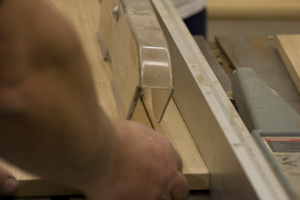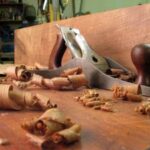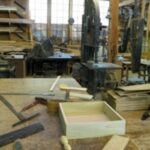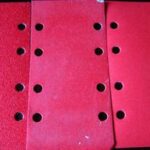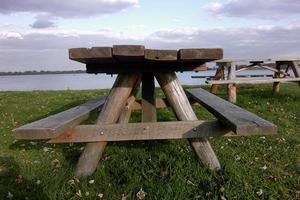Lumber or wood stock may be ripped to fit the dimensions of the desired woodworking project. A portable circular saw, table saw or band saw all work as tools to rip lumber. The band saw is the best choice especially if auxiliary roller stands or feed tables are available.
When using the band saw you will find that the blade will not jump, seldom binds and will never kicks back the piece of wood. A good band saw blade for ripping is one that is ½ inch thick with a tooth count of either 3 or 4 per inch.
A portable circular saw may be used to rip a board with minimal effort. The board to be ripped needs to have the ripping mark placed on the surface for guidance. This may be done by snapping a chalk line or simply drawing the rip line using a straight edge and a pencil. The board will need to be propped off the cutting surface in order to be ripped. This is necessary to achieve a clean cut and not cut what is underneath the board. A straight edge may be clamped to the board to give the circular saw a guide.
Ripping on a table saw requires that one side of the stock is straight. The straight edge will be put up against the rip fence and then fed into the blade. The blade should be set so only ¼ inch shows above the board. This will help to prevent kick back.
The power for ripping on a table saw is more than when cross-cutting wood stock. You may feel that your table saw does not have the power to rip a piece of lumber. There are several simple steps that may be followed to ensure the rip cut is accomplished.
Make sure to use the proper rip blade. A 7 1/4-inch rip blade should have 18 flat-top teeth. A 10-inch blade should ave between 20 to 30 flat-top teeth. The hook angle on both blades should be 20 degrees.
The blade should be sharp. If it is not, either have it sharpened or purchase a new blade. Once a sharp blade has been installed on the table saw, if it still cuts slowly, a thinner kerfed rip blade should be purchased and used. Less wood is moved with a thinner blade which helps with the ease of cutting.
Another suggestion is using an 8 inch rather than a 10 inch blade on the table saw. The smaller blade will take longer to cut but it has more torque.
The final fix for adequate power is to give your table saw its own circuit. A 20 amp circuit is sufficient to supply enough electricity for 110 volts. If the table saw is plugged into an extension cord, power may be lost through the cord. Always try to plug any power equipment directly into a wall jack.
Do not slow down the feed of the board on a table saw. This will cause over heating. Heat is generated when sawing because of the friction between the blade and the board. The saw dust distributes the heat and removes it from the cutting area. Slowing down the cutting causes more friction and less saw dust. The extra heat may cause the blade to over heat and then warp.
